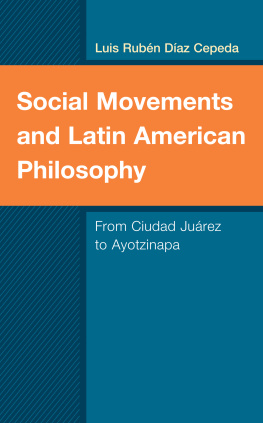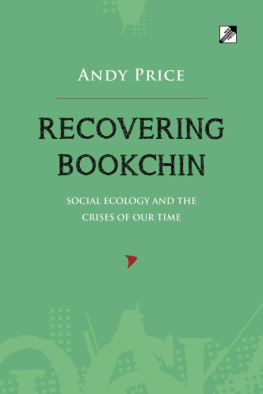The Social Ecology and Economic Development of Ciudad Jurez
About the Book and Editor
As the issue of immigration between Mexico and the United States becomes more critical, it is increasingly important that we understand the process of development in Mexico's northern border region. This collection of essays offers an empirical analysis of development in Ciudad Jurez, with an emphasis on the social and spatial contexts in which economic relations occur. The analyses are framed by a general discussion of urbanization, migration, and industrialization, considered in light of the history of Mexico's northern frontier. Contributors recount the city's pattern of urban growth in response to the natural environment and the changing national culture and examine current patterns of land use, especially as compared to similar development in other Latin American cities. Other issues considered are the impact on household activities of the structure of women's participation in the maquiladora work force; the city's use of its human resources, especially in off-shore assembly activities; and the foreign orientation of the Jurez economy.
Dr. Gay Young is assistant professor of sociology at The University of Texas at El Paso.
To the Memory of Ann Mary Shaffer Young
The Social Ecology and Economic Development of Ciudad Jurez
edited by Gay Young
First published 1986 by Westview Press, Inc.
Published 2019 by Routledge
52 Vanderbilt Avenue, New York, NY 10017
2 Park Square, Milton Park, Abingdon, Oxon OX14 4RN
Routledge is an imprint of the Taylor & Francis Group, an informa business
Copyright 1986 Taylor & Francis
All rights reserved. No part of this book may be reprinted or reproduced or utilised in any form or by any electronic, mechanical, or other means, now known or hereafter invented, including photocopying and recording, or in any information storage or retrieval system, without permission in writing from the publishers.
Notice:
Product or corporate names may be trademarks or registered trademarks, and are used only for identification and explanation without intent to infringe.
Library of Congress Catalog Card Number: 86- 50936
ISBN 13: 978-0-367-29582-0 (hbk)
Contents
Gay Young
Robert H. Schmidt and William J. Lloyd
William J. Lloyd
Gay Young and Susan Christopherson
Kathleen A. Staudt
Edward Y. George
Oscar J. Martnez
Guide
My thanks extend to many people--some named below and some unnamed. First, of course, I am indebted to Dr. Hector Quevedo of the Direccin General de Investigaciones y Estudios Superiores of the Universidad Autnoma de Ciudad Jurez for his willingness to make the raw questionnaires of the Jurez Household Survey available to Susan Christopherson and me. Charles Elerick deserves thanks for providing the funds (during his tenure as Director of the Center for Inter-American and Border Studies at The University of Texas at El Paso) for the processing of those questionnaires, A visiting position at The University of Texas at Austin, made possible by Frank Bean and Norval Glenn, Chair and Acting Chair, respectively, of the Department of Sociology, enhanced my access to certain library materials and enabled me to advance the editing significantly. Both colleagues have my gratitude. I appreciate tremendously Linda Marston's fine cartographic work (underwritten by Howard Daudistel, Chair, Department of Sociology and Anthropology, UTEP) and Florence Dick's meticulous preparation of the camera-ready manuscript. Finally, thanks to Gideon Sjoberg for conversation and an encouraging hand.
Gay Young
This collection of essays will appear after the July elections in Mexico. The Partido Accin Nacional (PAN) continues to challenge the PRI in the north and in Ciudad Jurez, in particular. Given the economic importance of the northern border region, can the PRI afford weakened control there? This struggle reveals one aspect of the larger context in which Cd. Jurez has developed--that is, location on the frontier with the myriad of consequences which accompany that fact (such as reduced integration into the central political apparatus). The essays in this volume bring the locational or spatial dimension to bear on their analyses of development in Cd. Jurez. While the contributors accomplish this in varying ways, from concern with the location of a unit in the city to the location of the region in the global economy, all the essays reveal to some degree the importance of the social spatial context in which economic relations occur.
The contributors offer analytic descriptions of empirical patterns of Cd. Juarez's development. Substantively, they treat the city's growth history and land use patterns, the organization of its households--including maquila workers' households--and the utilization of its human resources, as well as the city's economic connections to the United States and, thus, the world system.
The first chapter elaborates the significance of Mexico's northern border region and the border itself for the processes of migration, urbanization and industrialization in Cd. Jurez. Next, Schmidt and Lloyd analyze patterns of urban growth in Cd. Jurez not only in terms of the interaction of land use patterns with the natural environment but also in terms of changing national cultures and the border's role in those processes. Linking developments in Cd. Jurez to patterns found elsewhere in Latin America, Lloyd then examines the basic land use and residential structure of the city, including the issue of services to the colonias .
The analysis by Young and Christopherson of the structure and activities of Jurez households reveals variation among households based on how they intersect with the city's economy. Next, because females make up the overwhelming majority of production workers in the Border Industrialization Program, Staudt examines the impact on Jurez households of women's participation in the maquiladora work force. Then, in addition to presenting a profile of human resources in Cd. Jurez, George analyzes the maquiladoras as a case of the problematic use of "human capital." Finally, Martinez focuses on labor and trade plus tourism to examine the foreign orientation of the economy of Cd. Jurez.
With the exception of the first chapter, all chapters draw to some degree on data from the Jurez Household Survey in their analyses of development in Cd. Jurez. This Survey, conducted in 1979, represents an effort to establish empirically some social patterns in the city. The stated purpose of the survey was to provide baseline data on the Jurez population in ten areas: demographics, education, migration, political participation, health and nutrition, household expenses, satisfaction with public services, occupation and income, housing, and leisure. A copy of the survey instrument is presented in the Appendix.
During January and February of 1979, under the auspices of the Direccin General de Investigaciones y Estudios Superiores of the Universidad Autnoma de Cd. Jurez, social science and management students administered survey questionnaires in approximately 5,000 Cd. Jurez households. Although not a true probability sample, the households were chosen in a manner such that they are representative of the city's population--excluding the elite and the poorest-of-the-poor. Using two maps of the city, one from the Secretara de Asentamientos Humanos y Obras Pblicas and the other from the Junta Municipal de Aguas y Saneamiento, the neighborhoods of the city were identified and the number of residents in each was determined as accurately as possible. The number of households in each neighborhood was then estimated and a sample was chosen of five to ten percent of the households in sixty randomly selected neighborhoods.












